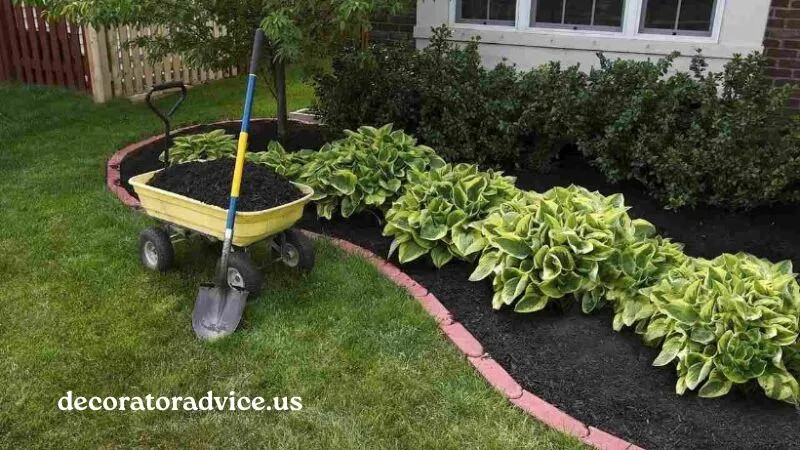Your garden is more than a place to grow plants—it’s an extension of your home. A thoughtfully designed yard can increase your property’s curb appeal, provide a relaxing retreat, and create a welcoming spot for family and friends. But where do you start? That’s where Decoradyard garden tips by DecoratorAdvice come in.
DecoratorAdvice has long been a trusted source for home décor and outdoor design ideas, and their approach to gardening focuses on balance: style, functionality, and ease of care. In this comprehensive guide, we’ll explore the most effective strategies to design and maintain a garden you’ll love year-round.
Why Garden Design Matters
When people think about improving their home, they often focus on interiors. But the first thing visitors notice is the outside. A well-kept garden sets the tone before anyone walks through the door. Beyond appearances, a garden also provides practical benefits:
- Increases home value — A beautiful yard boosts curb appeal.
- Supports wellness — Spending time outdoors reduces stress and improves mental health.
- Encourages sustainability — Planting native species supports pollinators and reduces water use.
Whether you’re working with a small balcony garden or a sprawling backyard, the principles of yard landscaping remain the same: plan thoughtfully, choose the right plants, and add design features that suit your lifestyle.
1. Start with a Garden Plan

Jumping straight into planting often leads to a cluttered, uneven look. DecoratorAdvice recommends sketching your garden first. Ask yourself:
- Do I want a quiet retreat or a lively entertaining space?
- Should I dedicate an area to vegetables or herbs?
- Do I need open lawn space for children or pets?
- Where does sunlight fall during the day?
Mapping out seating areas, pathways, and planting beds ahead of time ensures everything flows naturally. Digital design tools or even a notebook sketch can help visualize proportions and layout before breaking ground.
2. Choose Plants That Thrive Locally
The secret to a lush, long-lasting garden isn’t just choosing what looks pretty—it’s choosing what will survive with minimal fuss. That’s why low-maintenance plants are central to Decoradyard’s philosophy.
- Native plants: These are adapted to your local climate, requiring less water and care. For example, coneflowers and black-eyed Susans thrive in many U.S. regions.
- Drought-tolerant options: Lavender, rosemary, and succulents are perfect for hot, dry climates.
- Shade-loving plants: Hostas, ferns, and astilbes brighten dim corners without constant attention.
Grouping plants with similar needs (sunlight, water, soil type) simplifies maintenance and keeps them healthy.
3. Layer for Depth and Texture
Flat lawns can appear monotonous. To create dimension, layer plants of varying heights and textures. A successful garden design often follows this pattern:
- Background: Tall trees or bamboo for structure.
- Mid-layer: Flowering shrubs like hydrangeas or azaleas.
- Front layer: Low perennials or ground cover such as creeping thyme.
Texture matters as much as color. Combining feathery grasses, glossy leaves, and soft petals gives your garden a dynamic, ever-changing look throughout the seasons.
4. Add Focal Points
A garden without a focal point can feel like it lacks direction. A focal point draws the eye and anchors your design. Options include:
- A sculptural tree like a Japanese maple.
- A water feature such as a fountain, pond, or birdbath.
- A pergola or arbor draped with climbing roses.
- A cozy bench framed by planters.
These elements transform a collection of plants into a cohesive outdoor sanctuary.
5. Think About Garden Lighting
When the sun sets, you don’t want your garden to disappear. Outdoor lighting extends its use into the evening while adding safety and charm. Popular choices include:
- Solar-powered path lights for walkways.
- String lights or lanterns for patios.
- Spotlights to highlight trees or sculptures.
- Underwater lights for ponds or fountains.
Layering different lighting types creates both ambiance and practicality, turning your yard into a space you’ll enjoy after dark.
6. Prioritize Easy Maintenance
The best gardens are the ones you can actually enjoy—not spend every weekend working in. That’s why Decoradyard emphasizes easy-care landscaping. A few strategies include:
- Mulching: Keeps weeds at bay, retains soil moisture, and improves soil health.
- Drip irrigation: Saves water and ensures plants get consistent hydration.
- Raised beds: Make planting, watering, and harvesting easier, especially for vegetables.
- Perennials over annuals: Plant once and enjoy for years, instead of replanting every season.
By planning smart, you reduce maintenance while keeping your garden vibrant year-round.
7. Personalize with Décor and Accessories
Your outdoor space should reflect your personality just like your indoor rooms do. Outdoor décor inspiration from DecoratorAdvice includes:
- Painted terracotta pots for a pop of color.
- DIY stepping stones with family handprints.
- A hammock or hanging chair for relaxation.
- Repurposed items like old ladders as plant stands.
- Seasonal decorations—pumpkins in fall, lanterns in summer.
These small touches make your garden feel personal and unique.
8. Blend Function with Style
A great garden is more than ornamental—it should fit your lifestyle. If you love cooking, a kitchen herb garden near your door is practical. Families with kids may prefer open lawns for play. Entertainers might prioritize a patio with seating and lighting.
DecoratorAdvice stresses the importance of balance: your garden should look good and work for your needs.
9. Stay Seasonal
Finally, remember that gardens are living spaces that change throughout the year. Plan for four-season interest by mixing plants that bloom at different times:
- Spring: Tulips, daffodils, lilacs.
- Summer: Roses, hydrangeas, daylilies.
- Fall: Chrysanthemums, ornamental grasses, maples.
- Winter: Evergreens, holly, and plants with striking bark.
This approach keeps your yard looking fresh no matter the season.
FAQs About Garden Décor
What is the easiest way to decorate a garden?
The easiest way is to add potted plants, outdoor lights, and simple seating to instantly improve style and comfort.
How do I decorate my garden naturally?
Use stones, wood, and native plants to create a natural look that blends with the environment.
What decorations make a garden cozy?
String lights, lanterns, cushions, and a small fire pit or seating nook create a cozy atmosphere.
How can I make my garden look modern?
Choose clean lines, minimal furniture, metal planters, and neutral colors for a sleek, modern garden design.
Final Thoughts
The Decoradyard garden tips by DecoratorAdvice show that creating a beautiful outdoor space doesn’t have to be overwhelming. With careful planning, smart plant choices, and a few design features, your garden can become a sanctuary that enhances both your home and lifestyle.
By blending backyard landscaping strategies, low-maintenance plants, and personal décor ideas, you can transform your yard into a space that’s inviting year-round. Remember: the best gardens aren’t just about flowers or furniture—they’re about creating a place that feels like home.

I’m Harlod Jairo, a dedicated home writer sharing practical tips, creative ideas, and personal experiences to inspire beautiful, organized, and comfortable living spaces.
